Long-range aviation in air operations to destroy Nazi planes at airfields
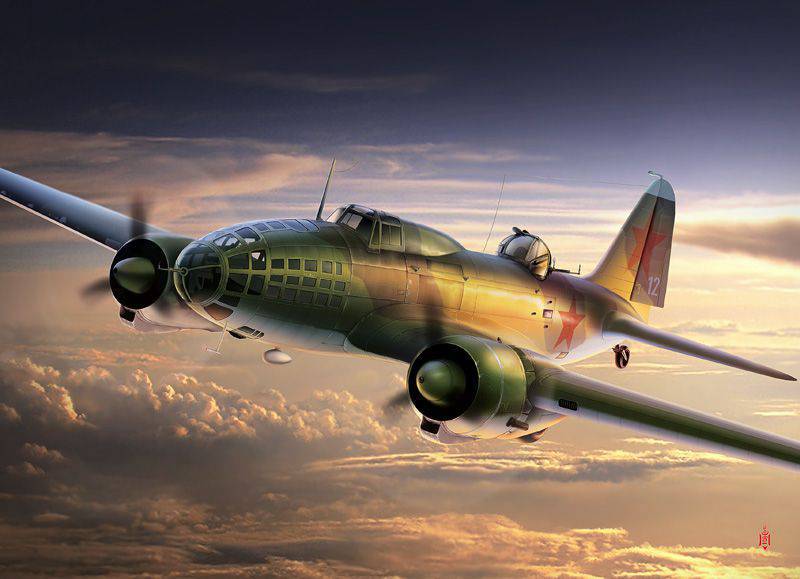
Since the beginning of the Great Patriotic War, the enemy seized air superiority, thereby placing our troops in the most difficult conditions. The current situation demanded the fastest defeat aviation groupings of Hitlerite Germany. The Soviet Air Force solved this problem in the course of daily hostilities and specially conducted air operations. German aviation was destroyed mainly in air battles, as well as at airfields. Long-range aviation (ADA), which consisted of more than 1300 Il-4, TB-3 and TB-7 bombers, took an active part in strikes against its base areas.
ADD connections have begun regular bombing of enemy airfields since July 1941. They also participated in a massive raid, carried out at the direction of the General Command Headquarters, with the aim of weakening the opposing air force in the zone from the Baltic to the Black Sea. 8 July at three o'clock 125 long-range bomber bombed 14 enemy airfields. Following them, the air forces of the Northern, North-Western, Western, South-Western and Southern fronts attacked 28 airfields. As a result of the attacks, Soviet aircraft destroyed and damaged a significant number of enemy aircraft.
Later, when the fascists advanced deep into Soviet territory, and bombing raids on Moscow became possible, our command also took countermeasures. In August, ADD formations bombed 67 of enemy airfields, which significantly reduced the activity of enemy aircraft.
Directive of the Supreme Command Rates from October 10 1941 to the commander of the Soviet Air Forces, General P.F. Zhigarev was informed that, according to spy data, on the night from 12 to 13 in October, the Germans plan to deliver a massive air strike with up to 1500 aircraft on industrial and strategic sites along the entire length of the Western Front. In accordance with the requirements of the directive on the decisive destruction of German aviation on the airfields from 11 to 18 of October, our air forces conducted an air operation, with the participation of the North-Western, Western, Bryansk, South-Western, Southern Fronts air forces and an ADD formation. Eight days, day and night, Soviet front-line aviation bombed its neighbors, while long-range 30 bombers were located at the most remote airfields in the north-west, west and south. Losses of the enemy amounted to more than 500 aircraft. The bomber regiments of 40, 42, 51, 52 and 81 of the ADD divisions were particularly effective. Only at the Orsha airfield, the crews of the 51 Division destroyed about 150 aircraft.
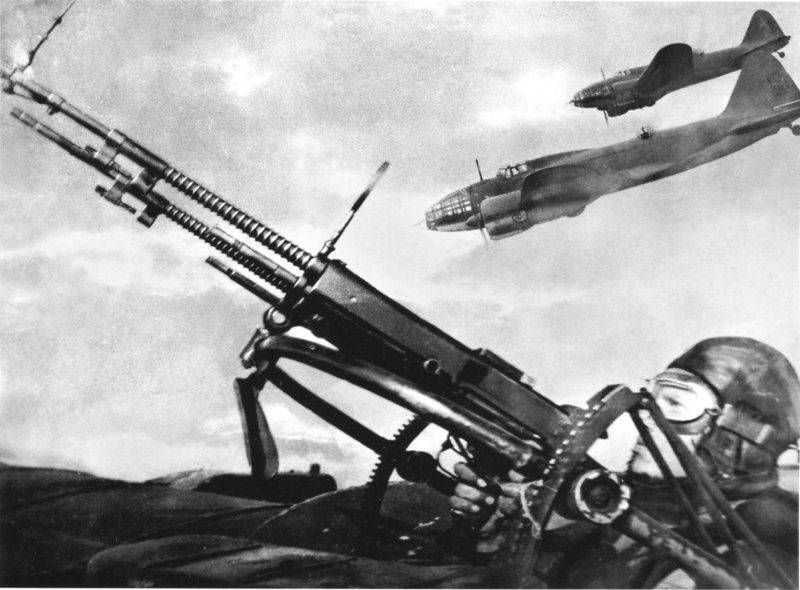
In the first days of November 1941, the Supreme Command Headquarters received information that the fascist command was planning to launch massive bombing attacks on Moscow on the day of the anniversary of the revolution. It was decided to conduct a large air operation from 5 to 8 in November to destroy enemy aircraft on airfields and thus thwart enemy plans. Aviation of the Kalininsky, Western and Bryansk fronts, the air unit of the Moscow military district, as well as the 81-division of long-range aviation were involved in the event. For three days they bombarded 28 airfields, and 12 and 15 on November 19, destroying 60 and 47 airplanes, respectively. The German plan to destroy Moscow in November 1941 from the air was disrupted by these actions.
In just six months of the war, long-range bombers carried out 1438 sorties, which resulted in strikes against fascist air bases. The raids were carried out mainly at night. The main objects to be destroyed or incapacitated were parking planes, hangars, fuel and ammunition depots, headquarters, communications centers, command posts, runways, flight crew and ground personnel. At night, the effectiveness of countering anti-aircraft artillery (FOR) and enemy fighters decreased, resulting in a decrease in the loss of long-range bombers. However, this significantly complicated the organization and execution of the flight, as well as the detection of the masked enemy's field airfields. Therefore, in preparation for the departure, the pilots carefully studied the photographic indications of the characteristic landmarks, the location of the sites, warehouses, air defense facilities and other airfield facilities. In addition, shortly before the raid, the command conducted additional reconnaissance of targets. The scouts, using luminous aerial bombs, clarified the presence and deployment of enemy aircraft on airfields and reported on the radio to the command post.
Bombers acted alone or in small groups (link, squadron). The planes reached the target from different heights with a small time interval relative to each other. To achieve surprise, the approach was made as far as possible from the territory occupied by the fascist troops and at lower engine speeds. In the absence of anti-aircraft fire, bombing was carried out from heights up to 500 m, which made it possible to also fire at targets with airborne small arms. In the case of intensive counteraction by anti-aircraft artillery, the crews bombed from altitudes from 1000 to 2000 m, maneuvering so that in the area of the aerodrome at the same time there were three or four aircraft. This dispersed the fire of ground-based air defense systems somewhat. To increase the impact of strikes, increase the duration of fire impact on the enemy, the pilots performed three to five visits, being above the target for up to 15 minutes. Sometimes practiced flights in a pair of bombers. The first of them covered the airfield, created fires, suppressed the fire of anti-aircraft guns and searchlights. The second dropped bombs on the parking of aircraft. High-explosive, incendiary and fragmentation aerial bombs were used as striking weapons.
Since the fall of 1941, ADD pilots began to use such combat tactics as blocking enemy airfields. One of the first to do this was the commander of the squadron of the 750 th Bomber Aviation Regiment, Hero of the Soviet Union, Major E.P. Fedorov. He took his plane to the area of a given airfield, waited for the return of the fascist bombers from the mission and quietly attached to them. After turning on the ground-based searchlights, the crew dropped bombs on the runway, parked and opened machine-gun fire on the aircraft on the landing course. There was panic on the airfield and in the air. Landing on a blocked airfield and taking off from it for a certain time were excluded. However, our aviation was unable to achieve significant results in the destruction of enemy aviation on airfields at that time. The main reasons were the lack of strength, the lack of experience of the organization of raids by commanders and staffs, and the strong anti-aircraft defense of targets.
In the winter of 1942, the industry increased the production of IL-4 aircraft. In the interests of organizational strengthening, separate divisions of the ADD in March were consolidated into operational integration with subordination directly to the Supreme Command headquarters. From the Air Force, 356 airplanes, 9 division headquarters, 20 regiments, 14 airfield service battalions, a school of navigators, 2 aircraft headquarters and a number of repair agencies were transferred to ADD. As a result of the growth of the aircraft fleet, the possibility of the massed use of long-range bombers appeared. So, in early June 1942, the enemy focused on the airfield Bryansk over 120 aircraft that bombed the Soviet troops in Moscow, Kharkov and Leningrad directions. ADD received the task to destroy this air group. On the night of June 14, the 145 IL-4 bombarded the airfield. Enemy losses accounted for 37 bombers, 10 fighter aircraft and 150 manned aircraft.
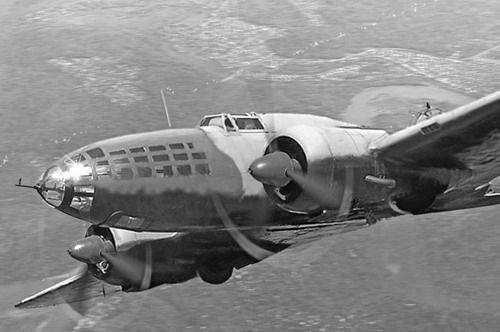
In the autumn of 1942, ADD connections were most active in the areas of the Stalingrad and Caucasus fronts. For example, at the end of September, aerial reconnaissance found that a large number (about 300) of Nazi planes had accumulated at the airfield of Armavir. A concentrated attack of several IL-4 groups was struck on the night of the 26 number, as a result of which the enemy lost about 70 bombers. In preparation for the counterattack, the command of the Soviet Air Forces organized another air operation by units of the 8 Air Army (AA) and ADD formations to destroy the Nazi planes at airfields. The strikes were carried out over two nights by three divisions, a long-range aviation division together with the 272-th night bomber division. The crews of the 8 Air Force performed more 500 sorties on the 8 bombardment of enemy airfields, destroying the 20 enemy aircraft and disabling the runways.
In 1942, the aviation industry and repair agencies delivered 650 aircraft for ADD, which made it possible to replenish the existing and form new aviation regiments. The increase in the aircraft fleet of long-range bombers influenced their battle formations. In front of each strike group (squadron) the weather intelligence officer began to fly out. The squadron commander, whose task was supplementary exploration and target lighting, followed the crew who duplicated his functions, then a group of bombers and a photocontroller.
The participation of ADD in the bombing of enemy airfields in the first period of the Great Patriotic War had a definite influence on the results of the struggle for air supremacy. Her pilots made more 7500 sorties to solve this problem. However, due to lack of strength, long-range bombers operated mainly in small groups. There was a desire to simultaneously strike at all detected airfields, which sprayed effort. The raids were prepared hastily, without carrying out detailed reconnaissance and working out questions of interaction. Due attention was not paid to the suppression of air defense weapons, as a result of which ADD suffered considerable losses.
In the second period, thanks to the combat experience acquired by the command and staff, the quantitative and qualitative change in the aircraft fleet, the picture changed. Echelon actions began to be skillfully combined with concentrated blows. Intensively conducted intelligence and air reconnaissance of home-based areas, composition and deployment at the airfields of enemy aircraft, the mode of its combat activities and air defense system.
By decision of the Supreme Command Headquarters, the ADD compound in January — March of 1943 conducted an independent military air operation, as a result of which German airfields were attacked by 19. For example, they made three raids on the Orsha airfield, destroying 16 aircraft, 2 hangars, 37 vehicles and several ammunition depots. At the air bases Seshcha, Bryansk, Oryol, Zaporozhye were bombed more than ten times each.
In the spring of the same year, the 50th and 62nd divisions, with a total of 200 aircraft, took part in the air operation that preceded the advance of the Soviet troops of the North Caucasus Front, which had the task of liberating the Taman Peninsula. This operation involved 4 and 5 air armies (VA) of the North Caucasus, 17 VA of the Southwest, 8 VA of the Southern Front and the Black Sea Air Force fleet. The main task was to weaken the German 4th Air Fleet, the aircraft of which was based on the airfields of the Crimea, Kuban, southern Ukraine, and to ensure Soviet air supremacy during the offensive of the front. According to the plan, it was supposed to strike at 18 airfields, where reconnaissance revealed the largest concentration of aircraft.
The operation ran from 20 to April 28. The crews of ADD operated at night along Kerch, Bagherovo, Saki, Sarabuz, Stalino, Mariupol and Zaporozhye airfields which were remote from 300 and more than kilometers from the front line. The most effective were the bombing of the Crimean airbases Saki and Sarabuz, during which 100 order was destroyed and around 70 and enemy aircraft were damaged. The total enemy losses on the ground from 17 to 29 in April amounted to 260 machines. The German command was forced to relocate an impressive part of their aircraft to airfields located deep in the rear. All this had a significant impact on the air situation in the early days of the Soviet offensive in the area of the stanitsa of Crimea.
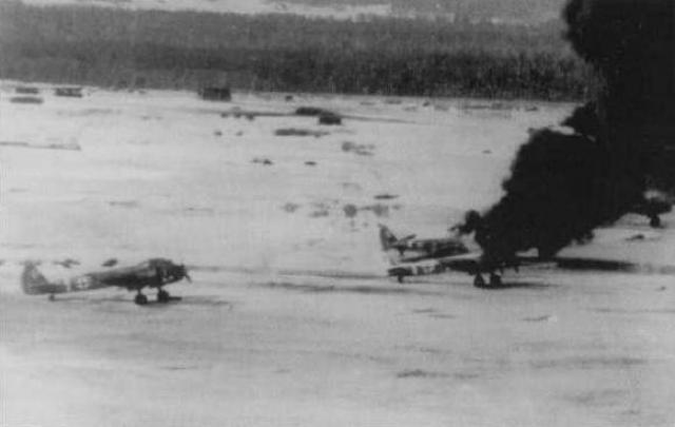
State Committee of Defense 30 April 1943 of the year adopted a resolution on the formation in the long-range aviation of eight air corps. The total number of aircraft in them was about 700 machines, and by the beginning of the next year reached 1047. As part of the aircraft fleet of air corps were; modernized IL-4, transport Lee-2 in a bomber version, a small number of four-engine TB-7 (Pe-8), as well as obtained under lend-lease dual-engine B-25.
By order of the Supreme Command Headquarters, the Air Force Command from 8 on June 1943 conducted a two-day air operation to defeat a group of German strike aircraft that carried out attacks on the strategic industrial centers of our country - Gorky, Yaroslavl and Saratov. It involved 1,2, 15 VA and ADD connections, which were given the task of subjecting the most loaded enemy airfields to the massive 15 bombardments. Il-4 groups of different composition struck for three days at the large Olyol, Bryansk, Seshcha, Karachev air bases, where the fascist Ju-88 and He-111 were based. On the night of June 8, the crew 102 bombed the airfield in Seshche, 87 - in Bryansk, 75 - in Orel, performing a total of 302 aircraft. For the next two nights, the ADD carried out large-scale raids on the same objects. Together with three BAs, 168 aircraft were destroyed at three German airfields.
The actions of ADD to defeat the enemy air groups were distinguished by their scope and high performance. They significantly undermined the combat capability of the air forces of fascist Germany and accelerated our conquest of strategic air superiority by our aircraft. Crews of long-range bombers made 1943 airplanes for the bombardment of German airfields in the 8674 year alone. But if in the first period the echeloned actions of small groups prevailed, and concentrated strikes even by the forces of the regiment were carried out sporadically, now the number of strikes by divisions and sometimes corps has increased significantly.
To successfully carry out a joint flight of such forces at night, it was necessary to change the battle order, which since the summer of 1943, began to consist of two echelons and several control groups. In my head there was an echelon of combat support, in which one or two squadrons were assigned. It was subdivided into independent groups (of scouting weather, pointing, target lighting, suppressing ground-based air defense systems, blocking airfields based on fighter aircraft) on 3 — 6 aircraft in each. The shock train consisted of regimental columns. Ahead of them, with some temporary lead, were followed by crews of visual control over the actions of the bombers and the results of the bombing. In the head, middle and tail of the combat order of the regiment were located aircraft equipped with aerial cameras.
The special importance attached to the implementation of comprehensive control was explained by the desire of the command to objectively assess the actions of the crews and the results achieved by them, to strengthen flight discipline, to improve the combat skills of aviators and to increase their personal responsibility for the performance of assigned tasks. In this regard, a harmonious control system was developed, which provided for: the use of aerial photography; carrying out missions of the command personnel to the target area and departures of specially appointed officers to the airfields subjected to bombardment and captured by subsequently advancing troops; the use of reports of flight crews, written reports from commanders of ground units and partisan detachments, statements from prisoners and other information.
The most operational methods were departures of controllers to the areas of objects of strikes and aerial photography. In the first case, the controlling crew went out to the intended airfield of the enemy with a lead time of three to four minutes relative to the strike level, and carried out bombing on an already illuminated and marked target. Then he gained altitude, stood in a circle and proceeded to a visual observation of suitable aircraft. Having a planned table, which indicated the sequence of follow-up of strike machines in the order of battle, the controller recorded on a pre-prepared pattern of the airfield, the time and points of the dropping of bombs dropped from each of them. However, when conducting concentrated blows by large forces, when several crews simultaneously bombed, it was almost impossible to determine individual results. The aircraft with photographic equipment were located in shock levels and filmed the main stage of the flight - from the beginning of the combat path to the target. The photographs made it possible to confirm the fulfillment of the task, assess the overall accuracy of the bombing and, if necessary, identify the causes of the mistakes made. But in most cases, the abundance of bright light from the airfield from the powerful rays of ground-based searchlights and fires affected their quality. Therefore, to obtain objective data on the results of actions, the commanders sought to use all forms of control in the complex.
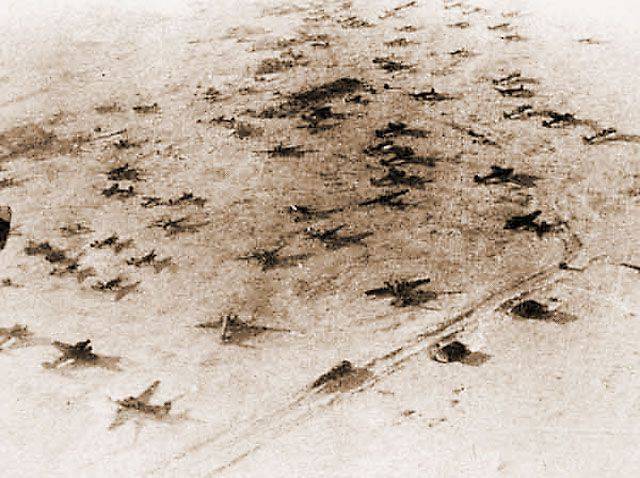
Changed and tactics of long-range bombers. Separate raids of groups in the squadron and the air regiment could not significantly weaken the enemy aviation group and only alerted him. The enemy strengthened airfield cover with anti-aircraft weapons, took measures to disperse and camouflage vehicles, change flight modes, etc. As already noted, the ADD command focused on delivering concentrated strikes on airfields by forces of divisions and corps. The combat order of the first consisted of regimental, the second - of division columns. High impact density was achieved by reducing the time distances between bombers to 15 — 20 seconds due to their separation in height.
Systematic raids forced the Nazis to attract a large number of anti-aircraft artillery systems and night interceptors to protect large air bases. In this situation, the ADD command retargeted its formations for strikes at airfields located in another area. The enemy began to hastily transfer additional air defense forces there. But after some time, long-range bombers resumed strikes at former targets. The use of such tactics had a positive impact on the results. First, the Germans were forced to continuously maneuver anti-aircraft defenses, which did not always arrive in time to new places of deployment. Secondly, more airfields were subjected to bombardment, which increased the losses of German aviation.
Widespread blocking of airfields. This task was performed by the crews of three regiments of night block-hunters created in 2, 4, and 5 air corps. They began their work, as a rule, a few minutes before the flight by the shock echelons of the front line. It should be noted that at the same time, both the main aerodromes of the base of enemy bomber aircraft and the airfields of night fighters located near the flight routes of combat formations were blocked. The use by crews of aerial bombs with fuses set at various decelerations (up to 30 min) practically prevented the take-off of aircraft from blocked airfields. As a result, the impact of ADD attacks significantly increased.
In the third period of the war, when the Soviet air force completely dominated the sky, the intensity of actions on enemy airfields somewhat decreased. For example, in 1944, long-range bombers made almost 10 times fewer aircraft sorties to bomb enemy airfields than in 2,5. By this time, the grouping of fascist aviation was inferior in number to the Soviet, but it had a large number of airfields, which allowed them to base their air units dispersed. In the current situation, it is difficult to count on high efficiency of strikes, which was one of the reasons why in the third period only one independent air operation was carried out to destroy enemy aircraft on the ground. Before the start of the Belarusian offensive operation, eight ADD corps (1943 bombers) for four days 1007, 13, 14 and 15 on June 18 of the year were subjected to massive bombings and assault attacks on the 1944 airfields, on which the main part of the aircraft (about the 8XXX aircraft) were deployed, hit by German forces th air fleet. Crews performed a total of more than 850 sorties. The most intense raids were the Baranavichy airbases (6 airplanes), Bialystok (1470), Bobruisk (458), Luninets (163), Brest (126). The Germans lost a large number of aircraft, and the enemy air force grouping on this sector of the front was significantly weakened.
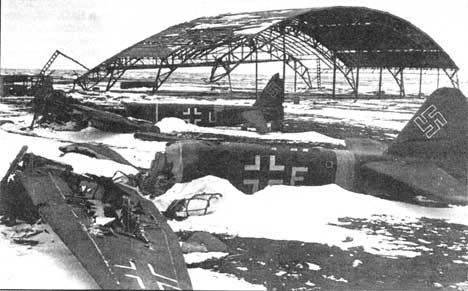
Strikes on airfields during daily combat operations did not cease. However, they were made only if the ADD command had reliable information about the concentration of large forces of enemy aircraft on the airfield. This happened, for example, in the south-west direction in the autumn of 1944. Having verified aerial reconnaissance data, 3-th guards air corps connections made 14 and 15 September at night two raids on the airfields of the Budapest aerodrome, where they destroyed and damaged about 200 aircraft.
Thus, in the years of the Great Patriotic War, long-range aviation made a significant contribution to the Soviet conquest of operational and strategic air supremacy. Long-range bomber formations actively participated in the fight against the air forces of fascist Germany, which was conducted in preparation, and in the course of defensive and offensive operations of the front forces, as well as during operational pauses. In addition, long-range aircraft participated in seven air operations. Five of them were conducted jointly with the Air Force (VA) fronts and two - with their own forces.
Air operations continued, as a rule, for several days and were conducted during the preparation of strategic operations in the areas where the main groups of the fascist German army were deployed, which made it much easier for the Soviet Air Force to gain operational air supremacy by the beginning of ground forces operations. In some cases, they had the goal of disrupting a massive raid, which was being prepared by Hitler’s command. The suddenness of a first strike by aviation compounds was achieved by the strictest observance of masking measures during its organization. At the same time, the efforts of all types of reconnaissance were focused on the opening of the main airfields, the air defense system, and the regime of the combat activities of enemy aircraft.
Enemy aviation was exposed to a wide (from 300 to 1200 km) front and to a greater (up to 300 km) depth, i.e. strikes on airfields were struck throughout the entire home zone. Planes to be parked, control centers, air defense systems, warehouses for various purposes and other facilities were subject to destruction. The destruction and additional mining of the runway stopped the operation of airfields for a period of several hours to a day. Simultaneous raids on all aerodrome knots of the strategic direction did not allow the fascist command to maneuver squadrons, made it difficult for them to withdraw from the blow and the possibility of organizing retaliatory actions. In the course of the bombing, the enemy also lost the technical flight crew, which since the summer of 1943, it has been quite difficult for the Germans to prepare. The operational result of the massive strikes was not only the routing and weakening of the fascist aviation groups, but also the forced relocation of the latter, to the airfields in the depths of their rear lines. During the war years, long-range bomber crews performed 20697 sorties to perform this task (9,6% of their total number)
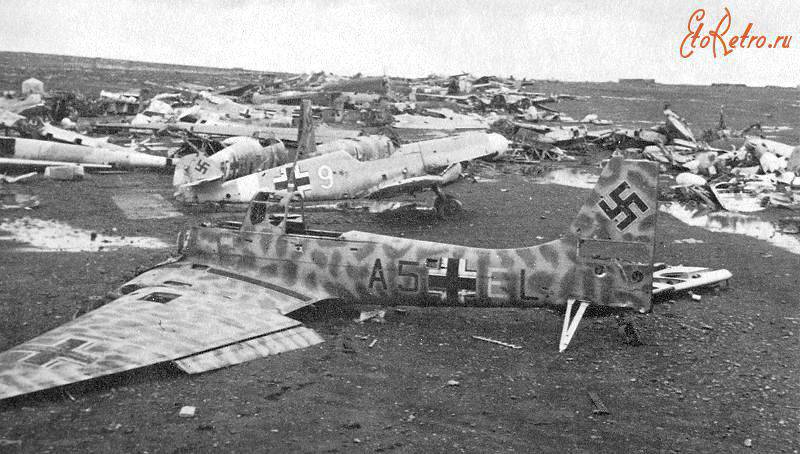
Experience shows that, with proper organization, the bombing of airfields was distinguished by high efficiency. For the destruction of one aircraft on the ground, 5 had an average of sorties, which was 6 times less than in aerial combat.
Sources:
Khazanov B. 1941. War in the air. Bitter lessons. M .: Yauza, Eksmo, 2006. C. 187-196.
Tsykin A. From “Ilya Muromets” to the rocket carrier: a brief essay stories long-range aviation. M .: Voenizdat, 1975. C. 107-112.
Timokhovich I. Operational art of the Soviet Air Force in the Great Patriotic War. M .: Voennzdat, 1976. C. 81-89.
Anuchin V. Long-range aviation strikes against enemy airfields // Military History Journal. 1985. No. 8. C. 19-27.
Palashevsky I. Actions of the Soviet Air Forces on the enemy's airfields // Military History Journal. 1976. No. 9. C. 20-28.
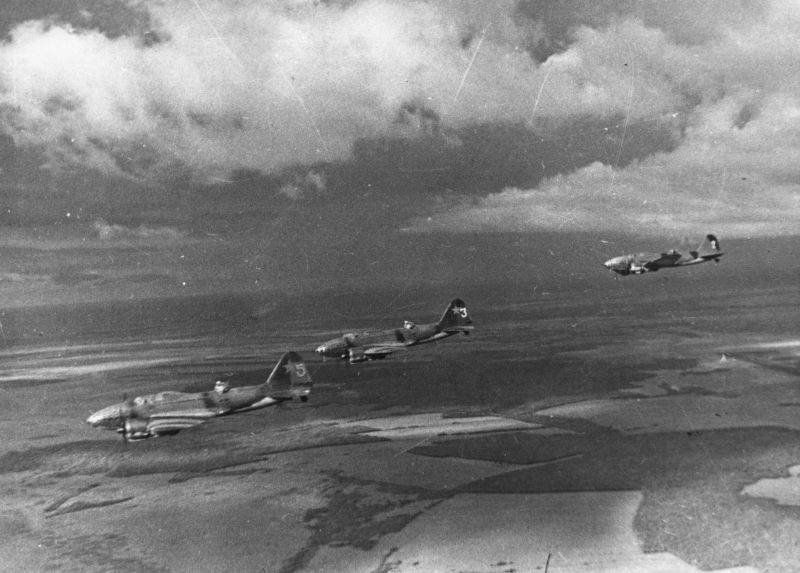
Information